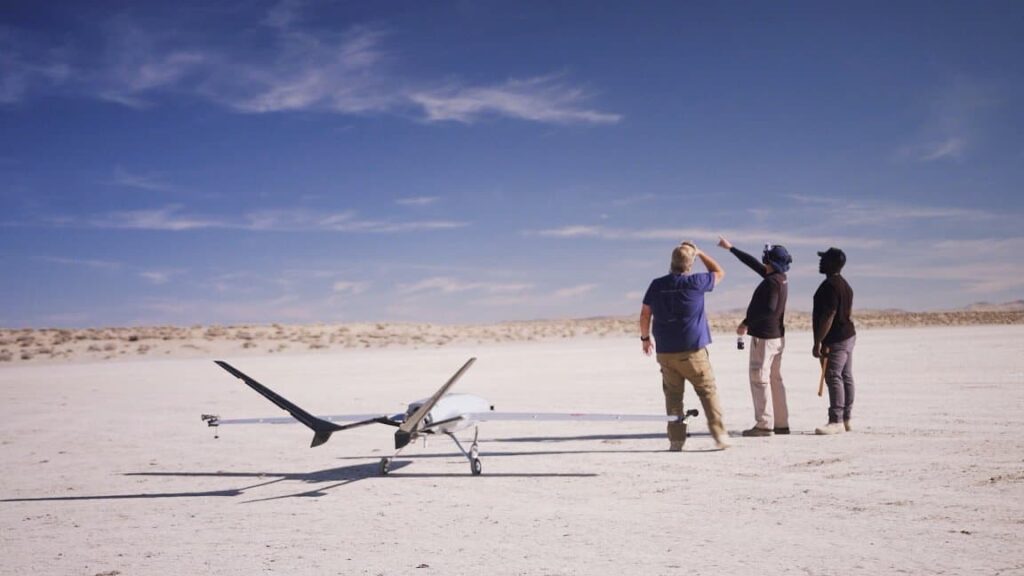

Iris Automation has confirmed that it has received approval from the Federal Aviation Administration (FAA) to conduct an autonomous BVLOS (beyond visual line of sight) flight with a small drone and without any visual observers or the use of additional ground-based detection equipment. The flight will be undertaken on behalf of the City of Reno and the Reno Fire Department (RFD).
This waiver is an important step in achieving autonomous flight, first testing over unpopulated areas before it can move to urban areas. The waiver covers a rural, unpopulated area south of Reno and was submitted by Iris Automation for the use of its advanced detect and avoid solution, Casia X, which provides situational awareness exceeding that of a human pilot.
Each year the RFD conducts approximately 41 Water Entry Team (WET) rescues, with 85% of them occurring on the Truckee River. Approximately 10% of these calls occur in the dark with many requiring first responders to enter the water. The average response mission lasts about an hour and includes approximately 12-20 first responders. Water exposure, especially in moving water incidents, is extremely dangerous for victims and first responders.
Using UAS in a BVLOS capacity will have a significant, positive impact on saving lives and reducing the resources required for these operations, putting fewer fire department personnel at risk. This goal continues the efforts the City established during the final phases of the FAA UAS Integration Pilot Program.
Reno is a participant in the FAA BEYOND program, designed to assist the FAA in establishing safety and performance standards for BVLOS operation by working with a diverse array of industry and public stakeholders. It provides extensive real-world, operational learning in the field to help inform regulatory recommendations. The City and Iris Automation have collaborated since 2019, first in the FAA’s Integration Pilot Program (IPP) and now in the BEYOND program, to test the use of autonomous drones during river rescue missions.
Casia X uses Iris Automation’s patented detect and avoid technology to detect, alert and avoid non-cooperative aircraft. For operators to fly autonomously over distances, onboard sensors like Casia X, combined with carefully designed concepts of operation provide a cost-effective and scalable solution, enabling high levels of safety.
Reno Mayor Hillary Schieve commented: “This is an exciting project, working with the BEYOND program and the latest technologies to open the skies both for our community and the broader public. It’s a unique teaming of public and private interests to achieve breakthrough operations for a wide range of cost-effective, public-facing services. Autonomous flying will benefit every member of our community and drive long term economic benefits including job creation, cost savings and more efficient services. We intend this to be our first of many waivers as part of this collaboration. We’re proud to be leading the way in this incredible space—and with a local BEYOND participant too—and excited to see our partners moving to this next step in the process.”
Dave Cochran, Reno’s Fire Chief, noted: “Getting to BVLOS is a significant milestone for search and rescue missions as well as for the safety of our employees. Drones allow us to launch into flight safely at a moment’s notice, with new and more effective approaches to making our downtown river corridor safer while also saving time and money. This accomplishment provides a blueprint for other fire departments, public agencies and enterprises to utilize drones.”
Jon Damush, CEO of Iris Automation, said: “The BEYOND program is an important example of constructive government and industry cooperation, and a testament to the forward-thinking leadership of the City of Reno. We’re thrilled to work side by side with the FAA and our home city, delivering our technology to enhance the daily lives of our community and beyond. We appreciate the FAA leadership of this program and the many areas it is involved in to advance the industry.”
“We have been working with the FAA and our partners for years to develop our technology as a critical safety layer, helping to mitigate the risk of mid-air collisions and enable the integration of uncrewed aircraft into our national airspace. These efforts have led to the development of our 360 degree field of view Casia X on-board system – designed to provide an effective additional layer mitigation against mid-air collision risk at a size, weight and price point that enables our industry. We expect to see more of these waivers as the industry adopts autonomous flight and we look forward to leading the way and helping to realize this future vision.”







Related Posts
New Drone Fires Thales Missile in Unmanned Air Combat Milestone
UAS Startup Accelerator Awards 3M in Funding
US Navy Orders Unmanned Tactical Resupply Aircraft